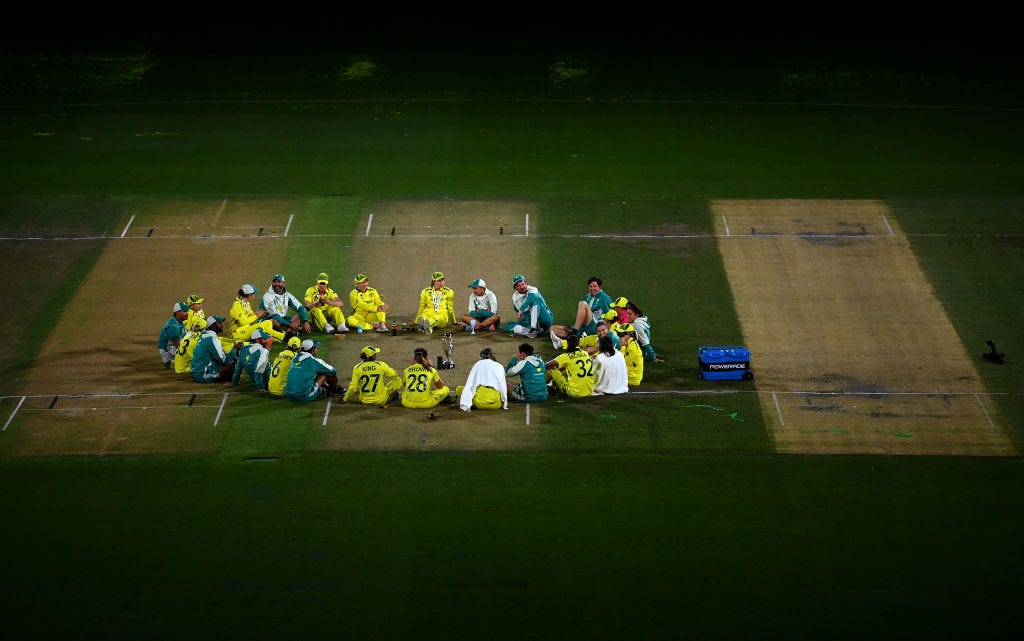Pitch perfect: The unbreakable Australians
PLUS: Rossco's final bow, the brilliant Paul Coll and putting an end to the cheap-shot cannonball tackles.
We likely saw the most dominant international cricket team ever assembled in this country over the past month.
In terms of strength relative to opposition, Australia were so far ahead of the rest at the World Cup that we look at the 71-run margin of the final and think England did alright.
As an exercise I put together my Team of the Tournamen…
Keep reading with a 7-day free trial
Subscribe to The Bounce to keep reading this post and get 7 days of free access to the full post archives.




